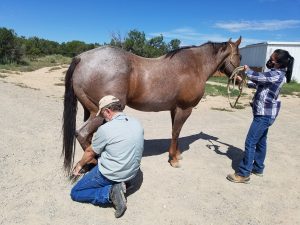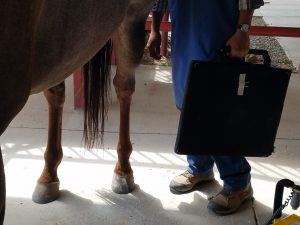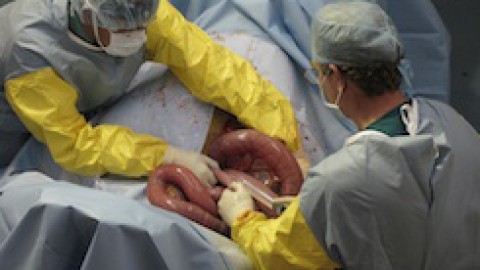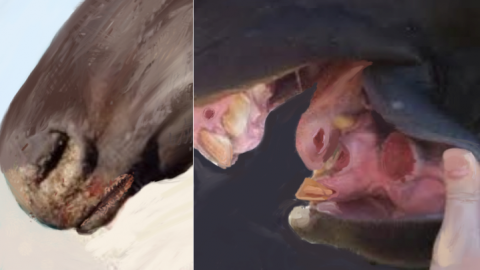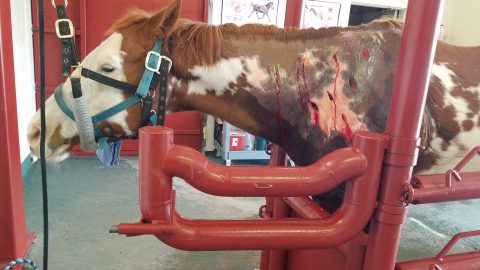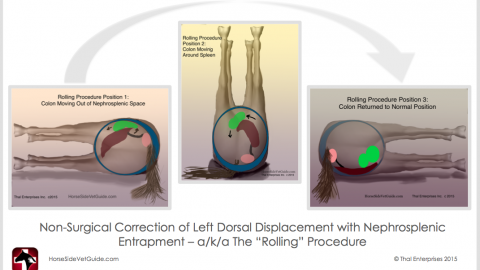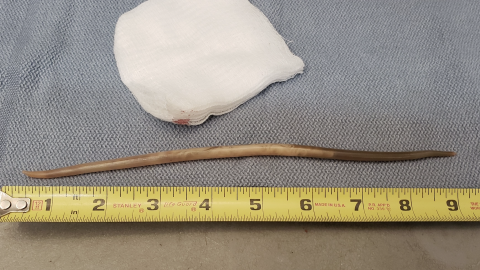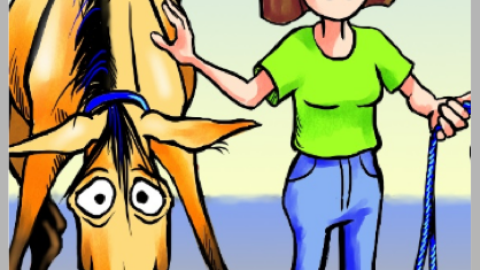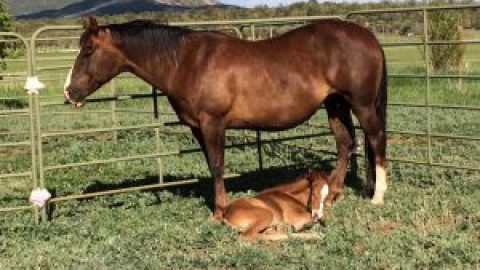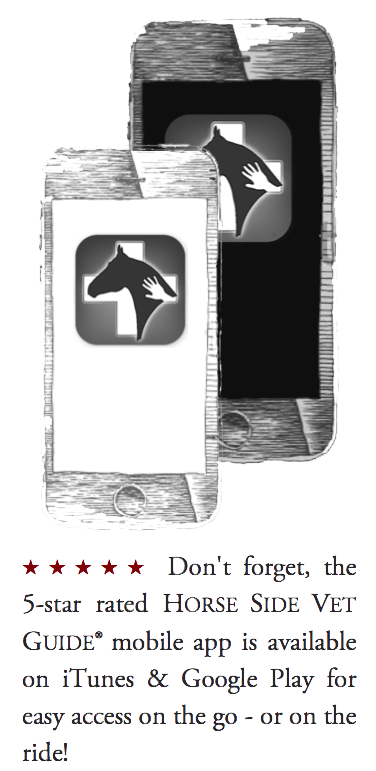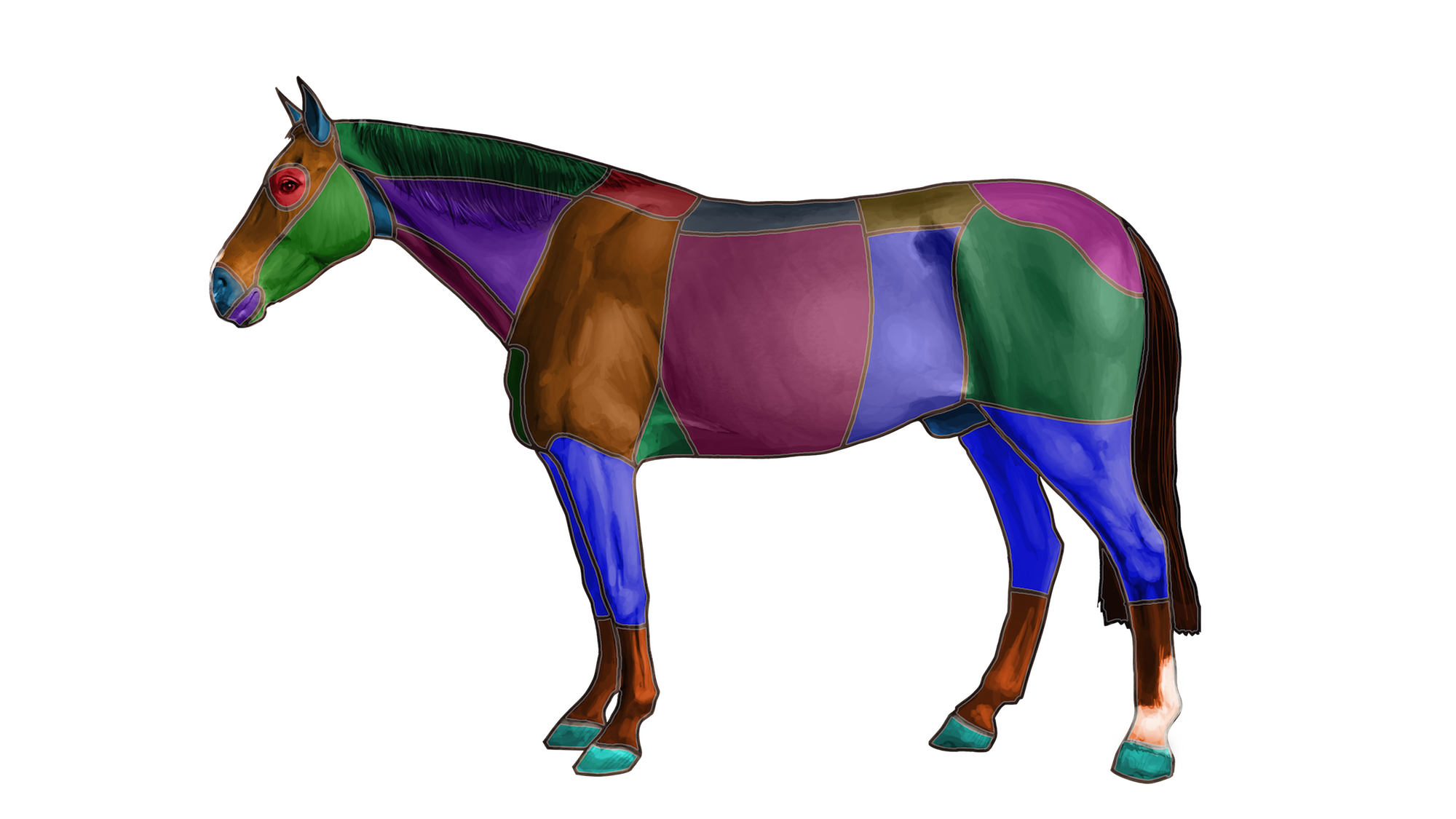Evaluating Lameness Using Technology – The Equinosis Lameness Locator
It is sad how many horses have to do their jobs while in less than sound condition. So often, riders, trainers, even judges fail to notice lameness. They shrug it off as just poor ability, or poor performance. When horse people are not trained to detect lameness, it often gets missed and horses suffer.
Whether a horse is in light, moderate, or heavy work, a ridden horse should not be lame! Even pain that isn’t detectable by riders, owners or trainers causes poor performance and can lead to other problems. Besides the impact to performance, it is also a welfare issue. The role of an equine vet is to detect lameness and help eliminate it.
Lameness and performance horse work has been a big part of my practice since I started equine vet practice in 1993. When I started out, I was fortunate to learn from some of the best lameness vets. In Denver, Colorado at what was then Littleton Large Animal Clinic, Marvin Beeman and Terry Swanson taught me the importance of objectivity: trying to control as many variables as possible in order to more reliably diagnose gait changes indicating lameness. Typical lameness diagnosis primarily involves observation of head movement, limb movement and movement of the pelvis as the horse trots in different patterns. Over time, this routine becomes an art—observation of a complex mixture of gait features that leads us to know a horse is lame in a particular limb.
I was taught to palpate a horse’s body and limbs in a particular way, to do flexion exams in a particular way, to apply a hoof tester in a particular way. When watching a horse in motion, I learned that it was critical to have the same good handler to trot horses each time, and to see horses trot on the same hard smooth surfaces-ideally asphalt-each time I examined them.
It was drilled into me that I needed to be as consistent in the application of the diagnostic tests as I could possibly be, or I would come to the wrong conclusions. But even being that methodical and objective, I would still make mistakes and miss subtle conditions.
I experienced many of the pitfalls that happen when objectivity meet subjectivity – and some of those ended up as costly wild goose chases looking for a lameness diagnosis.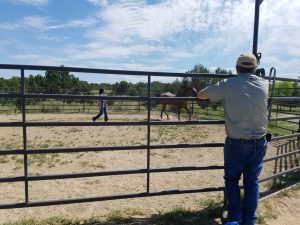
It wasn’t unusual in those days to embark on full-day lameness exams in which we blocked from foot to the hip. I learned a lot from those cases. I also learned the limitations, both in our ability to observe, and also in the reliability of many of our diagnostic tests, including blocks. Subtle hind limb lameness cases and multiple lameness cases were the hardest. Some degree of lameness in multiple limbs is a lot more common than we tend to think, and those cases can be really challenging to sort out. If it is hard to reproduce a subtle lameness consistently, then how are we going to localize it, or know whether treatments have helped?
After 27 years of practice, I still feel limited in my ability to consistently and objectively evaluate lameness. I feel like our 0-5 AAEP lameness grading system is far too subjective. If something were to come along that would give me better, more objective information, then I would jump at it.
A NEW APPROACH
About 15 years ago, Kevin Keegan, a professor of surgery and lameness at the University of Missouri vet school, began work on a system of inertial sensors to track movement of different parts of the horse as it trots. The system was named the “Lameness Locator”. The company became Equinosis, and their only goal and product is OBJECTIVE lameness evaluation. Dr Keegan started by scientifically nailing down the movement variables that were most reliable in determining lameness. He proved that some of the methods we were using were really not that reliable after all, and he proved that the human eye was just not that reliable either. He then figured out a system that would reliably measure those variables.
HOW DOES IT WORK?
Lameness Locator is an inertial sensor-based motion analysis system. It detects and quantifies movement asymmetry using 3 small wireless inertial sensors mounted on the horse, joined via long-range wireless connection to a hand-held tablet computer. The system samples motion about 10 times faster and more sensitively than the human eye can. The software utilizes special algorithms developed over years to measure and analyze lameness and filter insignificant movement.
The system is quick and easy to set up and use and doesn’t hurt the horse a bit. There is a sensor for the head at the poll, one for the right pastern and one that sticks via adhesive to the top of the hip.
When we are ready to trot the horse, we hit the start button, the system starts recording and the horse trots enough strides to gather the needed data – 25 strides for the straight line for instance. Trials are run- starting with straight line, then lunged circles, pre and post flexion, pre and post-block or treatment. Whatever we choose to do. The trials are analyzed and a whole variety of individual and comparison reports can be generated in seconds, so we can make decisions in real-time.
For each of these trials, the system indicates whether there is lameness, and if so, which is (are) the affected limb or limbs, the timing of the lameness within the stride for each, and the amplitude (severity) of the lameness. It puts a specific number on the lameness- an objective measure much more accurate and reproducible than our AAEP lameness scale. Rather than relying on our eyes and our opinion in that moment, it puts a value on paper and it represents it visually. That is a big deal! Just the objective information that IS provided is incredibly helpful. It saves time and adds confidence to both the initial evaluation and any follow-up.
Lameness Locator doesn’t tell us anything more than this. It is still up to us as lameness clinicians to determine what structures of the limb are involved and the nature of the injury to those structures. To do this we still need an excellent clinical exam, blocking and imaging. We then need to determine the best treatment and provide a prognosis.
Here is an example of a Lameness Locator report.
The circles at the top represent the left and right forelimbs. The rectangles below represent the hind limbs. This is a lunging comparison of left and right hind limbs. This is a horse with lameness in both hind legs. It shows that the lame leg shifts when the direction of trotting changes. I highlighted the comments made by the program. These are nice summaries but there is far more to the report in the details and numbers. The mild lameness in front is probably not significant. For any report, the vet interprets the report in light of the clinical situation and makes a decision about how significant the findings are.
Hmm..I don’t know about this thing…
I was skeptical when I first saw the lameness locator advertised. Having seen and treated many lame horses, I didn’t really feel I needed anything to tell me what leg a horse was lame on. The problem wasn’t that after all, I thought. The problem was determining the particular structure of that limb that was injured, the nature of the injury, and how to treat it.
But the more I studied the company and the device, the more interested I became. After considering it for years, I finally bought the system in the last month, and I have to say it is exceeding my expectations! If you know me, you know that doesn’t happen often. It makes me so excited to see on paper what I have been trying to describe over all these 27 years!
Here is how I am incorporating the Lameness Locator into our practice-
- *Purchase exams! Is a horse subtly lame at purchase exam or not? Significant lameness is easy, but subtle, especially hind limb lameness or multi-limb lameness is challenging. It’s nice to have a visual report to back up the clinical exam, to double check our eyes, put a number on the lameness and represent it graphically. Doesn’t that add another layer of confidence; to hold a report that says that on the day you purchased the horse there was no lameness?
- *I want every ridden horse to have a baseline. Then I would like to do quarterly or even monthly exams for performance horses. He seems to be going ok but Is he still sound?
- *It makes sense to monitor the progress of treatment and management of subtle lameness conditions. Is the approach working?
- *It makes sense to incorporate a Lameness Locator exam into our annual and semi-annual exams health exams, at least for ridden horses. It is just like checking teeth and general health.
- *Referral lameness cases. I see quite a few horses as a second opinion, for diagnosis and treatment. The Lameness Locator will be especially useful for complex and subtle lameness cases- evaluating horses pre and post flexion, pre and post block I think that this is going to be great to provide a more professional, visual report- an improvement over the service I currently provide.
I am really excited to incorporate this technology into our lameness exams. It is already increasing the quality of our work. The lameness locator represents the future of lameness assessment. Currently over 40 vet colleges worldwide are training new veterinarians in the use of this technology. To learn more about the lameness locator, visit www.equinosis.com


